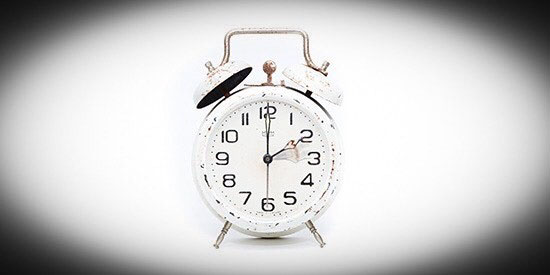Daylight savings and your body clock; tips from a Deakin expert
Media release
With daylight savings around the corner, a Deakin University sleep expert offers some tips to help our bodies adjust to the time shift and get a good night's sleep, including the kids.
Associate Professor Mark Stokes from Deakin's School of Psychology explained that our sleep-wake cycle takes a hit when the clocks change, leaving some people struggling to sleep.
"Our internal body clock, or circadian rhythm, is regulated by exposure to bright sunlight. That repowers the rhythm and resets our body clock allowing us to adjust each day to lengthening and shortening days," Associate Professor Stokes said.
"Daylight savings shifts the outside clock an hour in one direction or another, but not your internal body clock. So you can tell it to adjust as much as you like, but it will only do so in response to the right stimuli: sunlight.
"A few days with morning light exposure will see most people get over the struggle to waking earlier when daylight savings starts."
Associate Professor Stokes cautions that we should never underestimate the power of sleep.
"We know it is during sleep when the brain consolidates learning from the day and sheds the unimportant experiences. It also allows your body to recover," he said.
"When your sleep-wake cycle is not aligned with the day-night cycle, your mind and body will be more fatigued and your reactions will be significantly reduced in speed and accuracy."
Associate Professor Stokes offers the following tips for getting a good night's sleep:
- Take a morning walk: Exposure to as much morning light as early as possible repowers the body clock's rhythm and is important to maintaining stable strong sleep-wake cycles and enabling you to get the best sleep you can for your age.
"As pretty as dawn may be, if the sun is not up there is no light to adjust your inner clock." - Stick to a bedtime routine and no screens: Parents can help children adjust by setting regular bedtimes and removing screens (TVs, computers, i-pads, phones, game consoles).
"Screens suppress the sleep start signals in the brain, called the Dim-Light-Melatonin-Onset, which take several hours to work, and if missed do not come on again later making it harder for the kids to get to sleep. Turning screens off should be done early in the evening. At dusk is the best time at daylight savings or two hours after dusk in winter." - Have a nap: A 15-minute nap in the afternoon takes advantage of how our circadian rhythms are built - made of little, short rhythms all piled together.
"In some cultures, a siesta is a daily occurrence which is not a bad idea as these people feel much more rested for the remainder of the day."
Share this story

